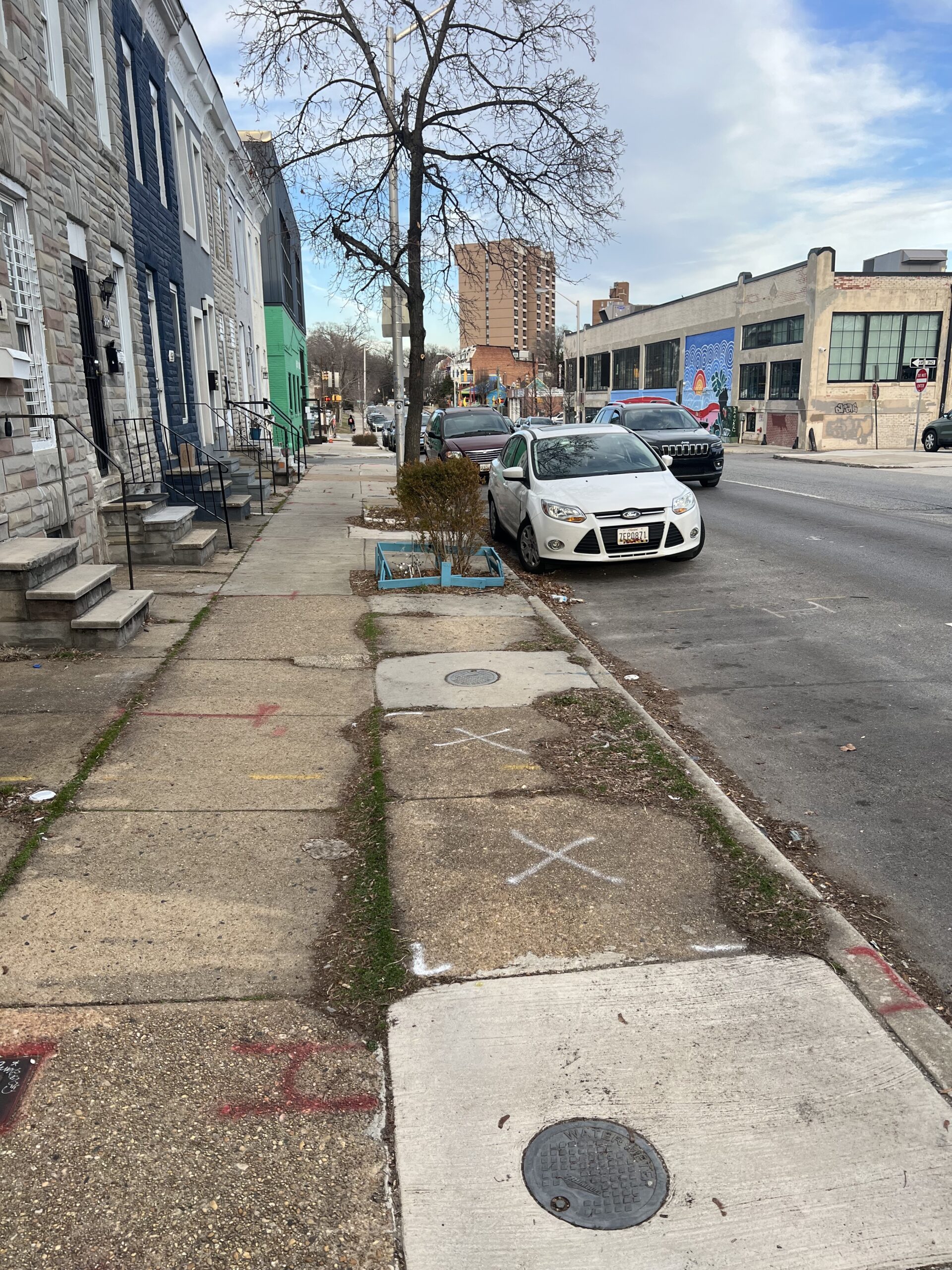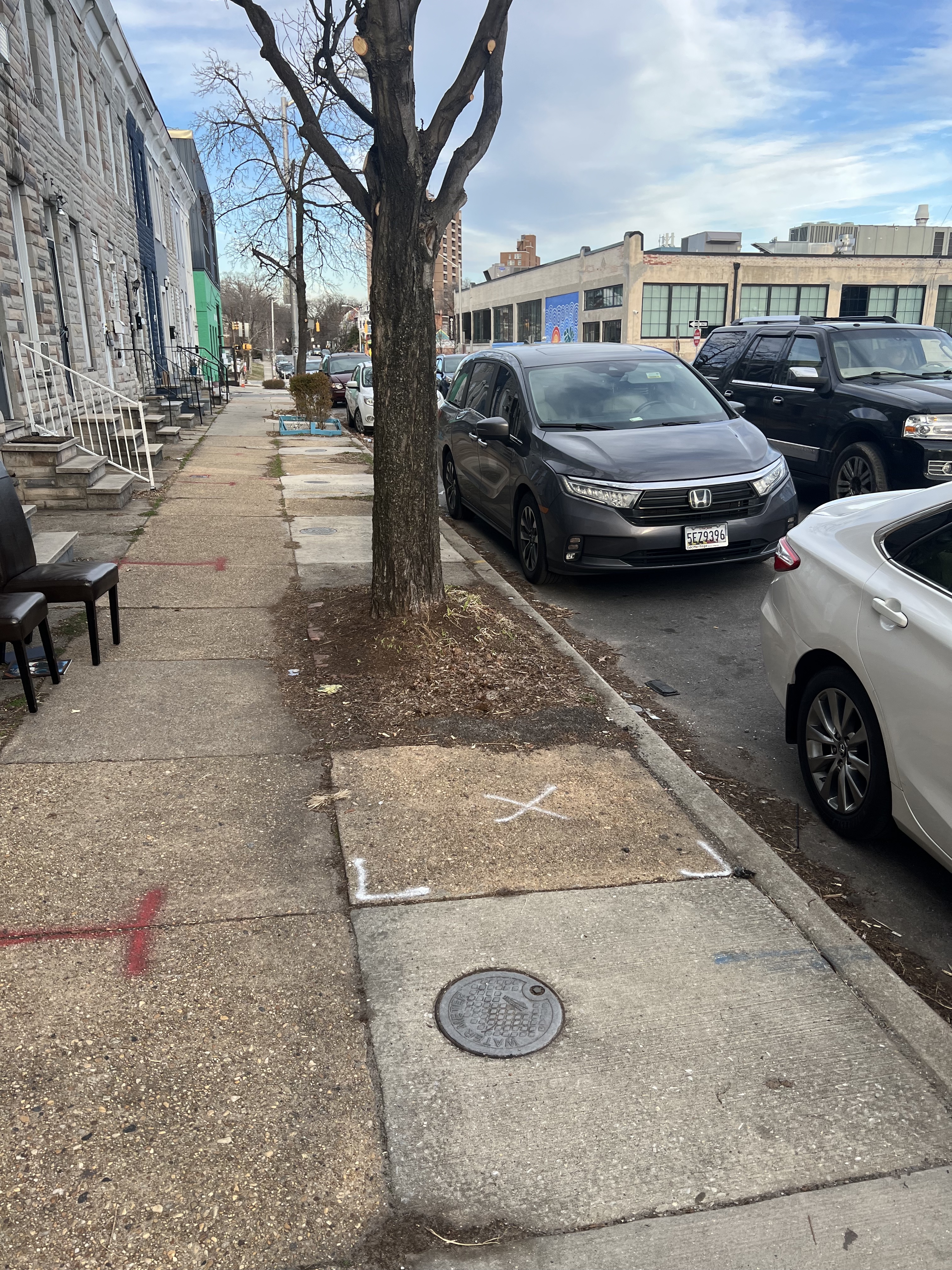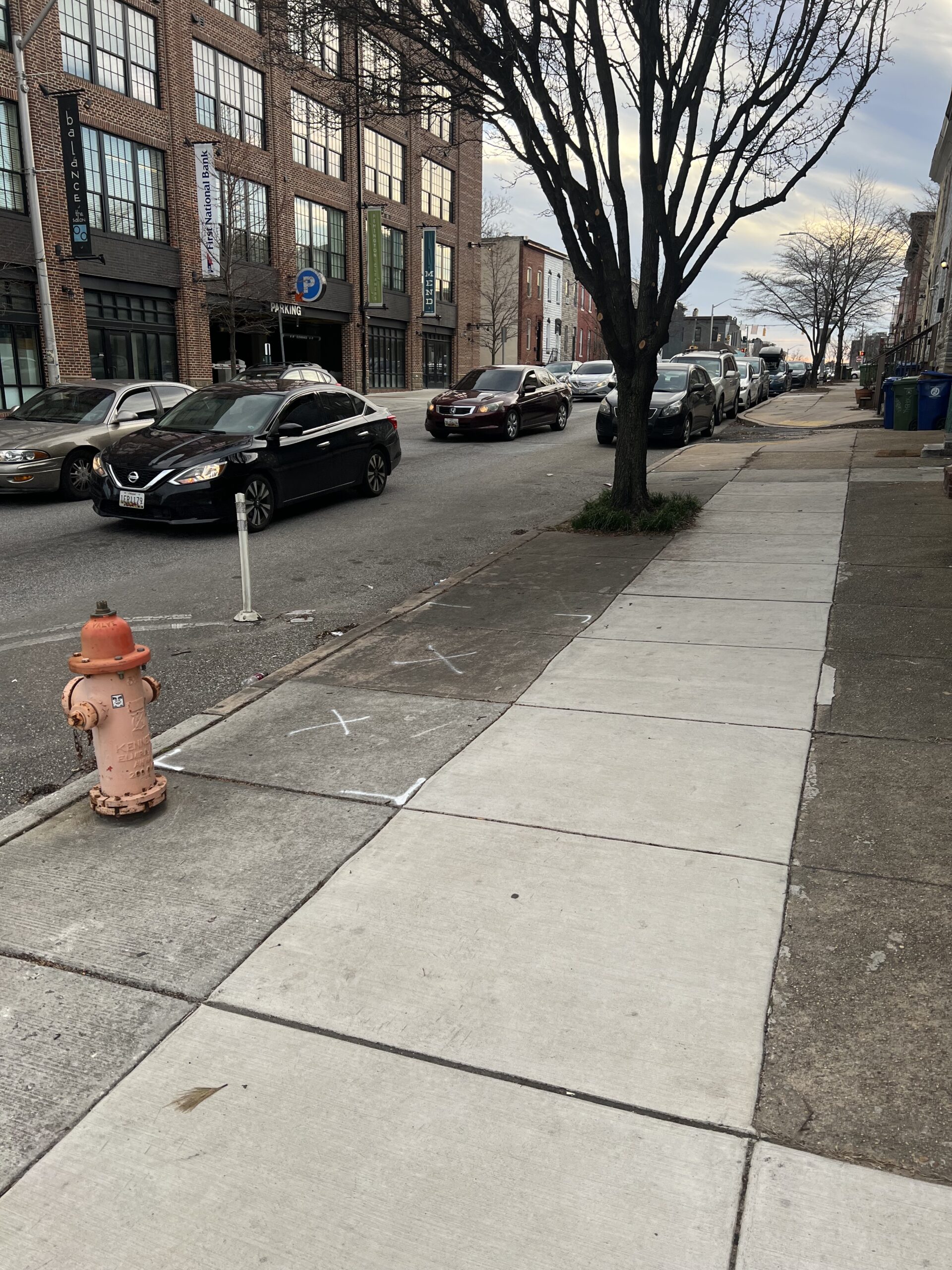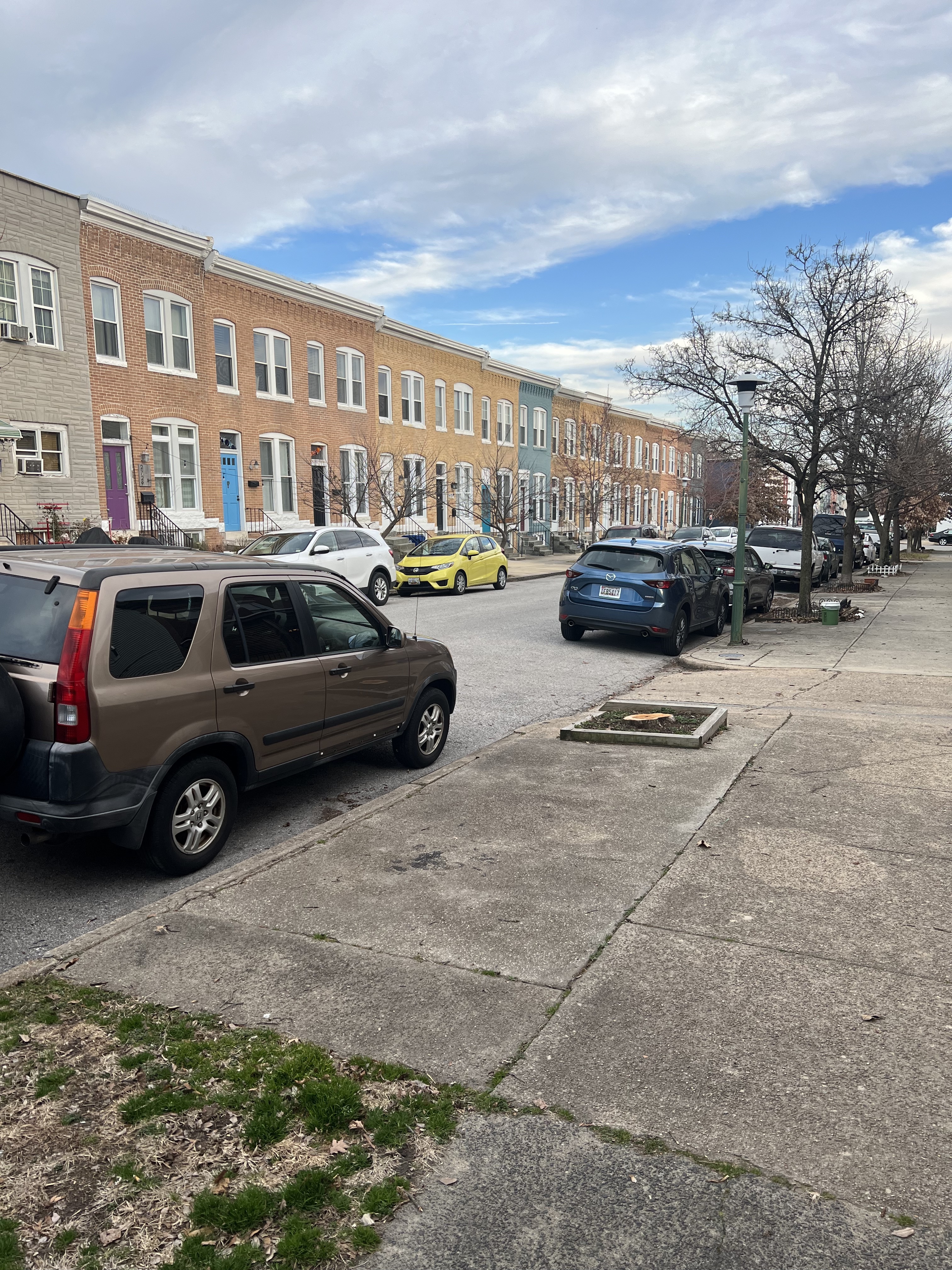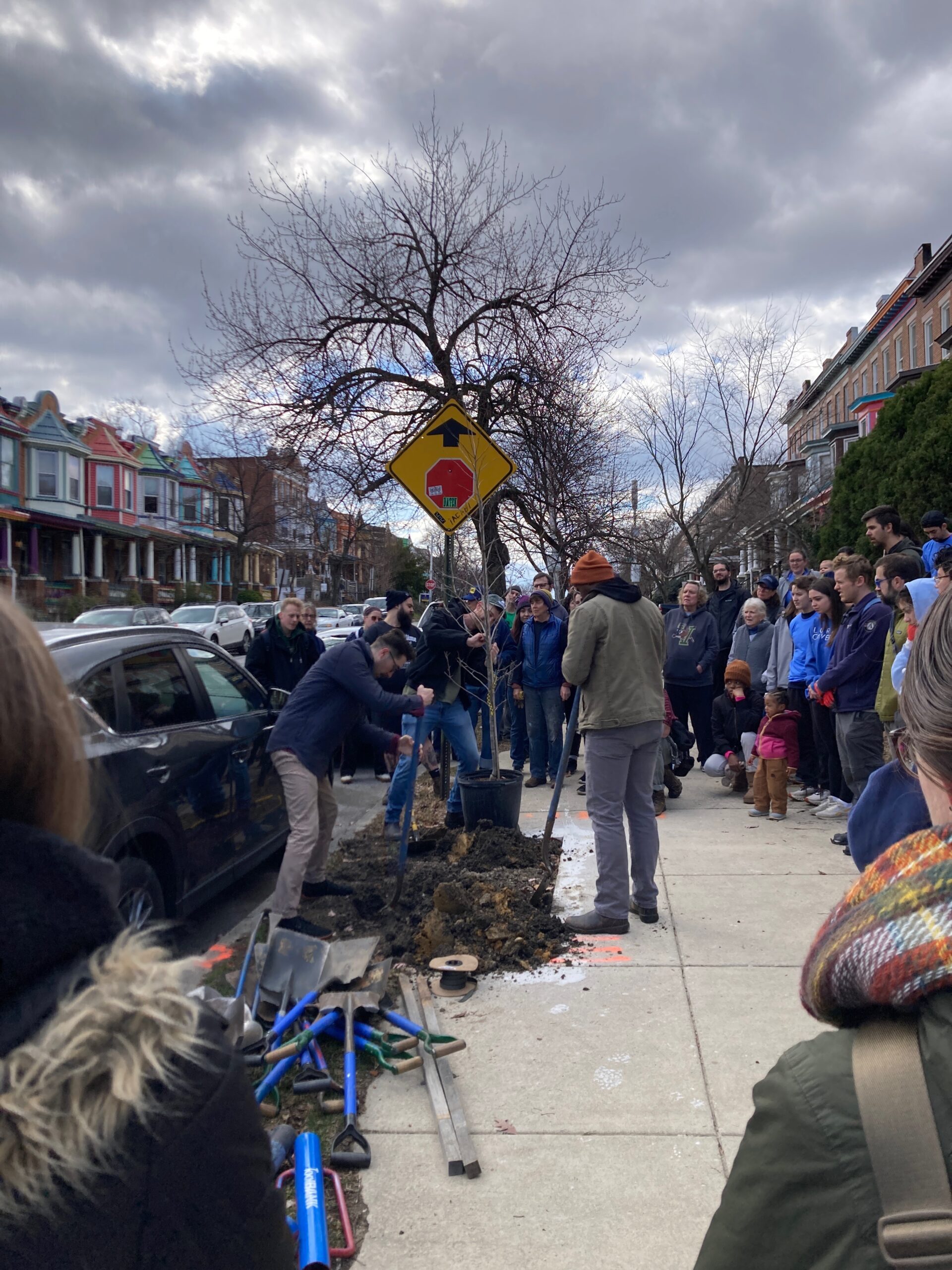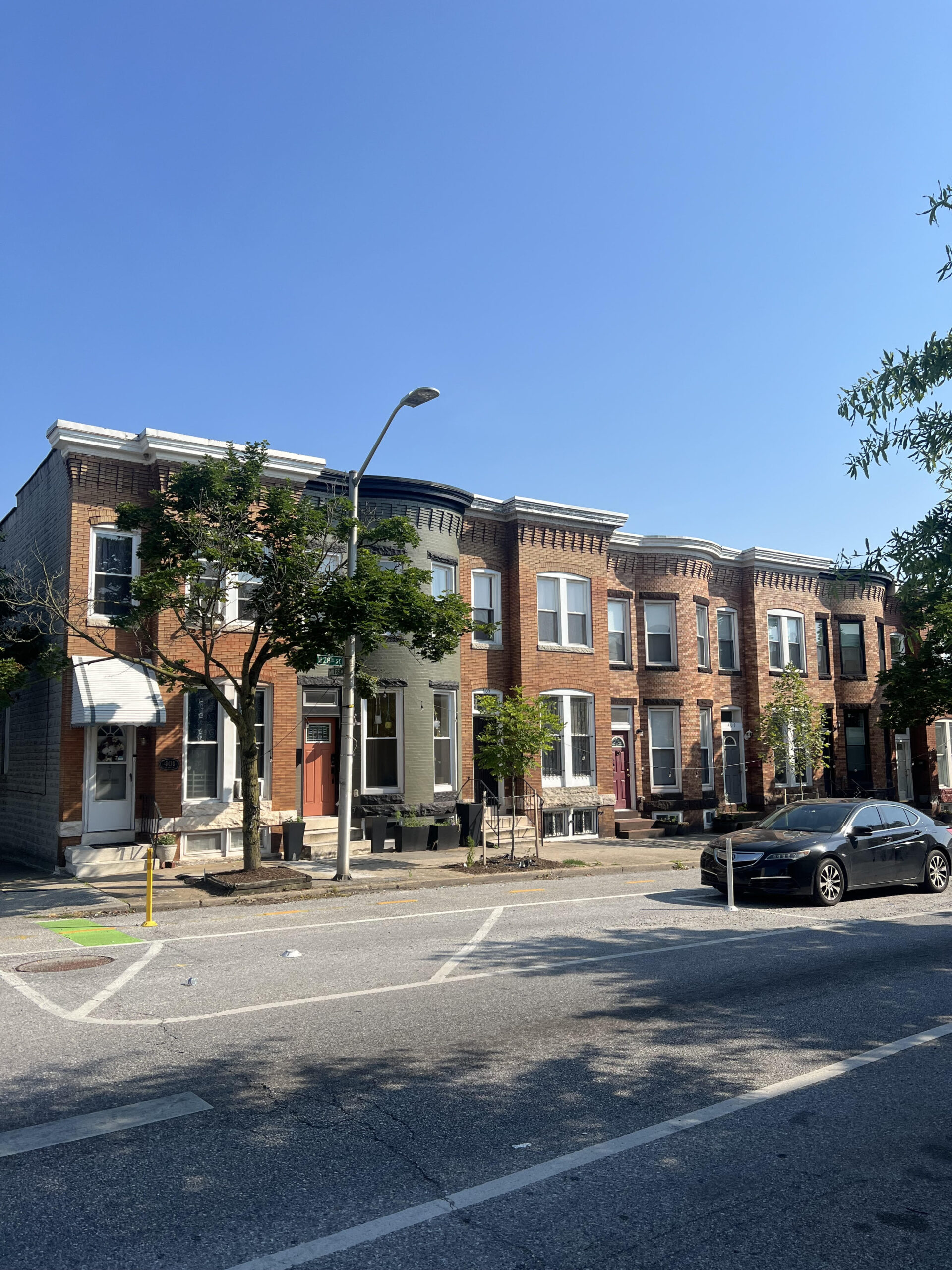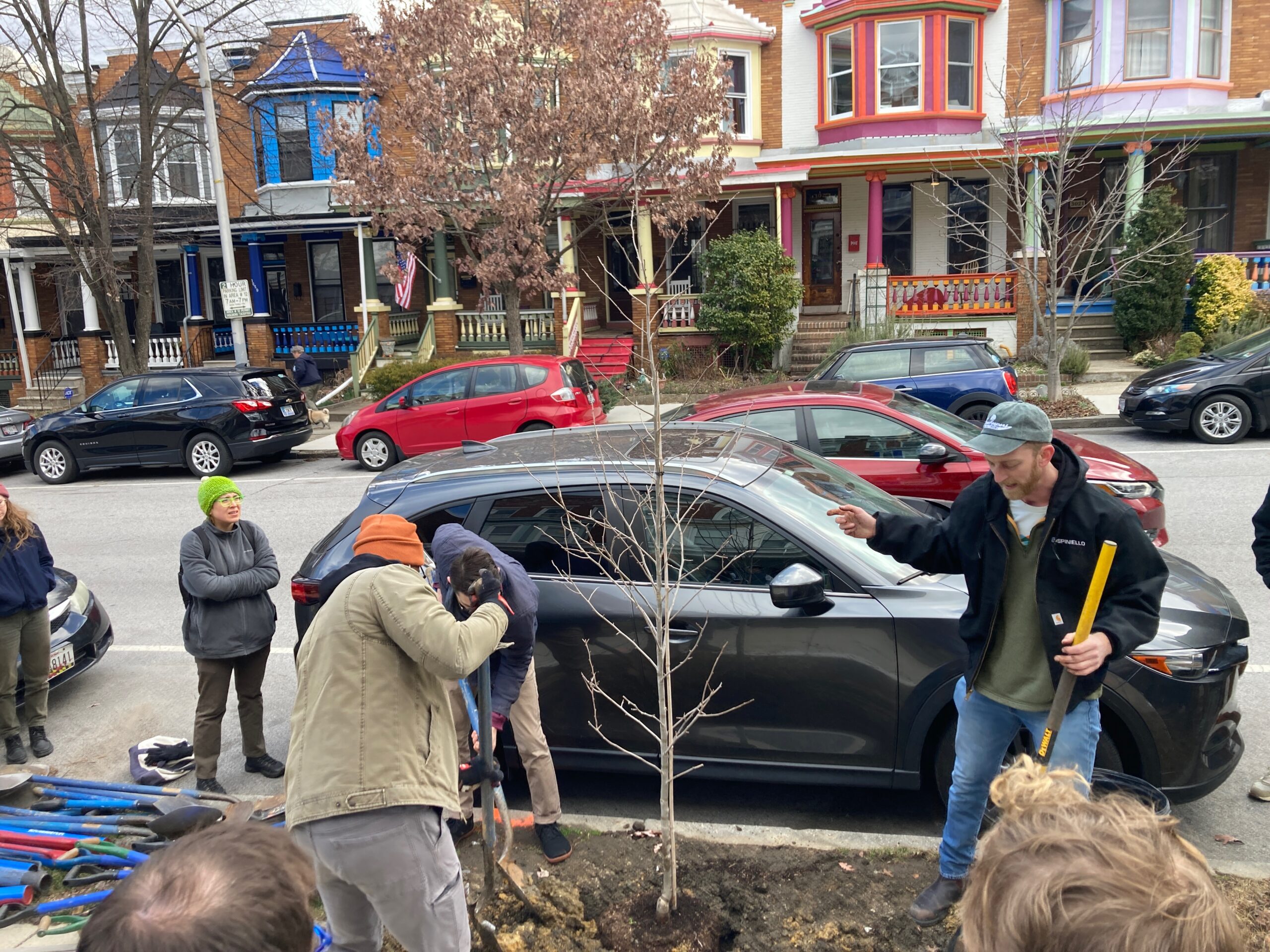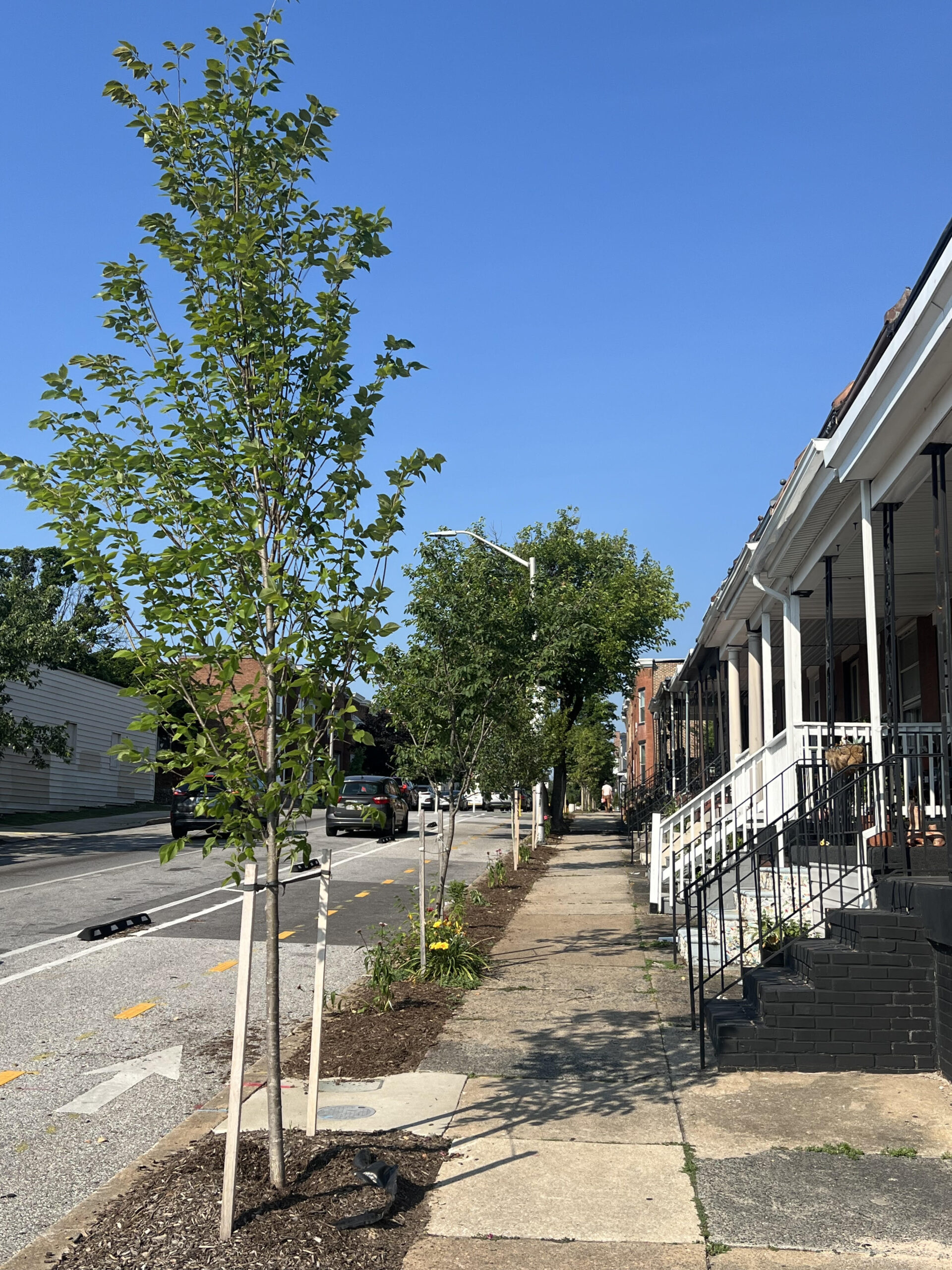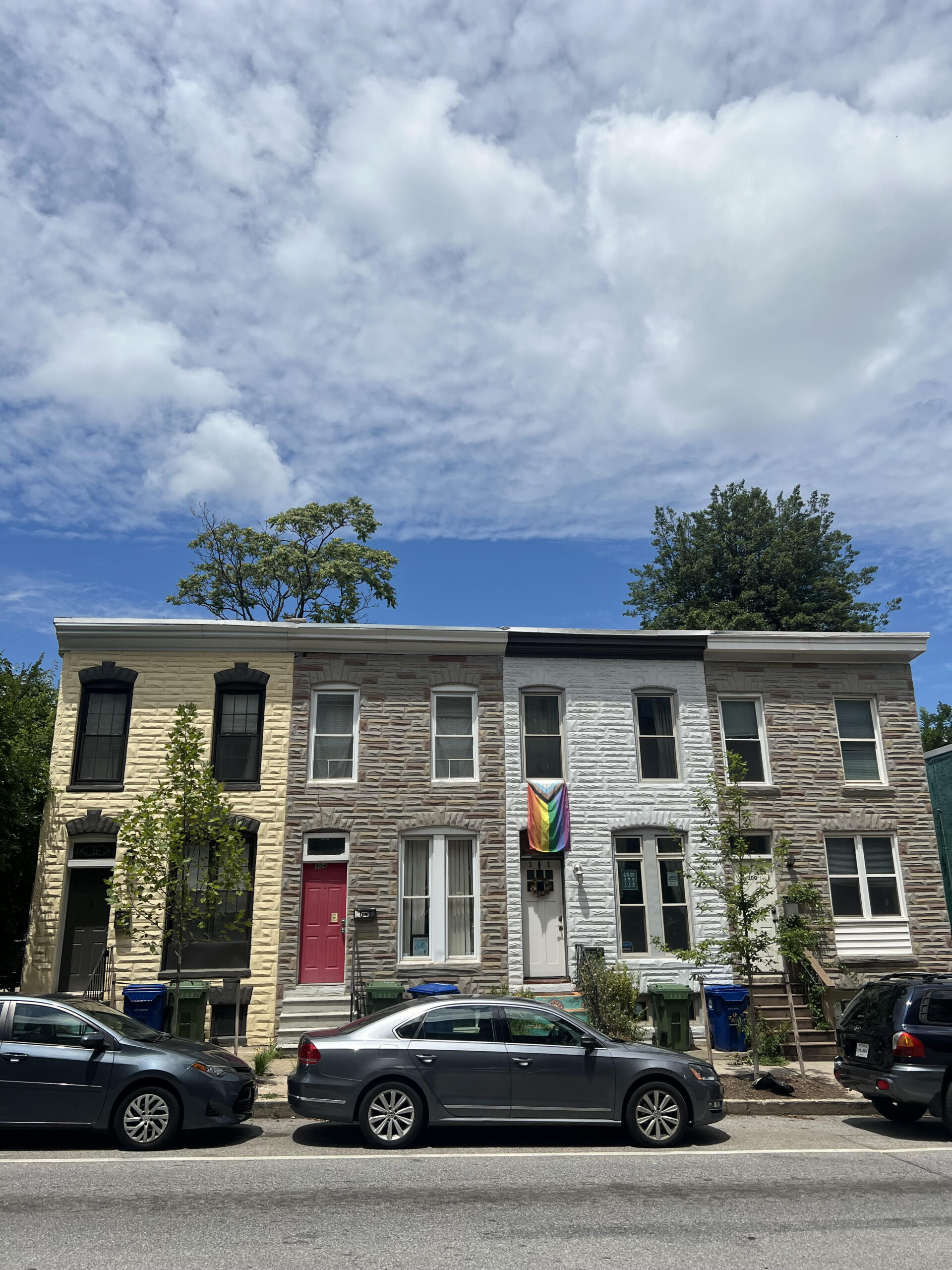Remington Green Corridors
Since the Spring of 2023, GRIA has planted (480) new street trees and removed over (10,000) square feet of concrete. Originally called Remington Green Corridors project, GRIA’s tree planting expanded to become the Central Baltimore Canopy Project after building connections through tree planting with the nearby neighborhoods Charles Village and Harwood.
Urban street trees can go without notice to many, but they provide vital services to a community including reducing urban air temperatures, creating safer pedestrian environments, and even reducing the blood pressure of neighborhood residents.
Baltimore City’s Forestry Division and their Tree Baltimore program are close project partners. Tree Baltimore is providing the physical planting stock and contributing their expertise. A wide variety of native tree species have been planted with varietals including Hackberry, Swamp Chestnut Oak, Serviceberry, American Basswood, and Post Oaks.
The transformational tree planting effort is of interest to researchers with the Baltimore Social-Environmental Collaborative (BSEC), a large study supported by the US Department of Energy dedicated to doing the science needed for equitable climate action in Baltimore. BSEC was engaged to collaborate on the planting initiative from the outset, to gather hard data on tree growth and the impacts that trees have on the local environment. Lead BSEC Investigator Ben Zaitchik, a Professor in the Johns Hopkins Department of Earth and Planetary Sciences, notes that “it is rare for climate scientists to be included in this kind of neighborhood-scale planting effort. We’re excited to learn how the trees will change street-level conditions, and to apply that learning to other neighborhoods that could benefit from this kind of planting effort.”
The City of Baltimore has a stated goal of expanding Baltimore’s tree canopy to 40% by 2037 (the current canopy measures around 28%). Street trees provide a host of benefits to the community including reducing urban temperatures, encouraging pedestrian access to neighbors and businesses, slowing of vehicular traffic, and measurable public health impacts. Urban trees are also crucial to supporting biodiversity and can help mitigate the effects of a warming climate. Concrete removal will provide natural stormwater mitigation while also reducing runoff to the Chesapeake Bay which contributes harmful nutrients like phosphorus, nitrogen, and sediment, human impacts that have diminished the largest estuary in the world.
To ensure these benefits are realized, GRIA ensures that grant funding covers 2 years of maintenance for the trees after planting, where afterward they will become the responsibility of the City Forestry Department. Watering, weeding, and mulching of the newly planted trees are extremely important to the long-term success of this project. GRIA President, and Civil Engineer, Chris Billak, is leading the planting effort. Residents with any questions about the project are encouraged to email chrisbillak@griaonline.org. If you are interested in Urban Forestry and would like to get involved, GRIA encourages residents to sign-up for Baltimore City’s Tree Keepers program, a “free, city-wide tree stewardship program open to all city residents interested in helping Baltimore’s trees.”


